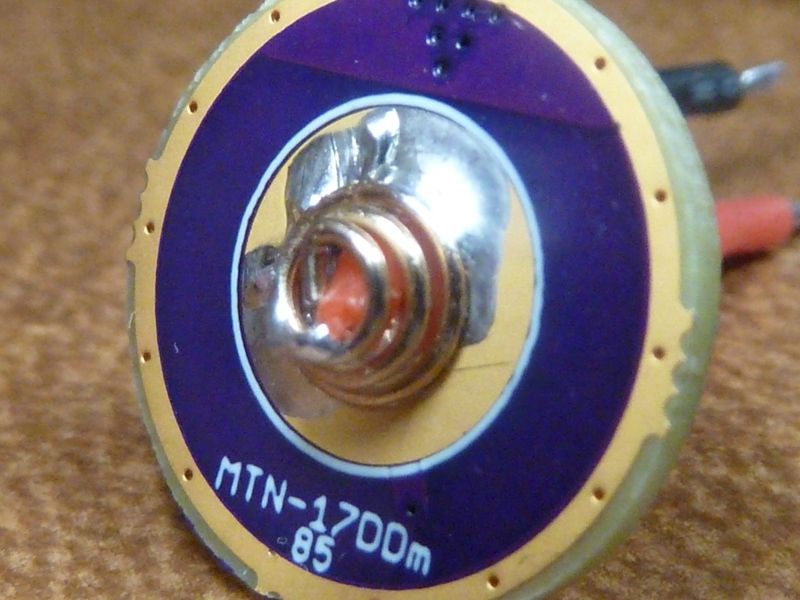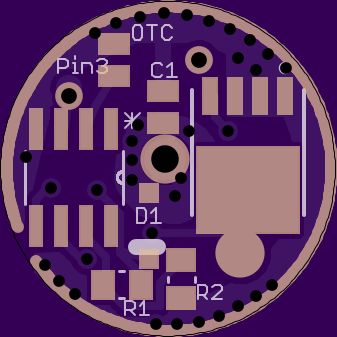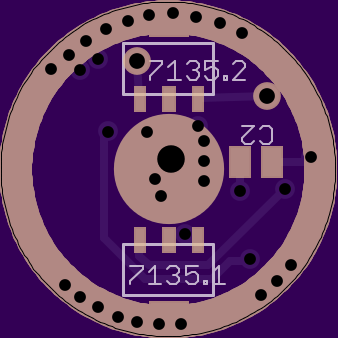I built up this light: tinywind ultrafire UF-T18, with a 219C on a 16mm Noctigon, using Richard's driver board: https://oshpark.com/shared_projects/acdEm3rR he posted here in post #163. It works great on a laptop pull cell @3.2V, works intermittently on a Panasonic 2800 mAh @4.15v, and doesn't work well at all on a SANYO GA @4.2v.



Quick review of UF-T18: nice compact 18650 e-switch tube light, it's a real UltraFire (driver is branded UltraFire), real SS retaining ring in the bezel, easy thread lock-out on the tailcap, body mounted side switch with 3 wires: grnd, switch, and bonus: RED LED in the switch! But the side switch is not so good - lot of force needed for the thumb, works ok on the tip of the index, or can use your finger nail, but don't think the rubber would last long on finger nail use. Bottom line: the switch is a killer disappointment without a fix, but I am not a side switch modder...
The problems appear to be the same issue I had in the other lights with the 22mm wight FET+1 driver, but now I don't have any zener pad available after the diode. I'm sure the problems have something to do with the low Vf, high amps of the 219C (5000K from Richard). I'll try piggybacking a 0.1 uF on the C1 cap, and see how it works. If it fixes the problem well, this may be the ultimate solution going forward for all 25/45/85 builds.
Richard's board design is pretty good, but using a SIR800DP, there is very little pad space to solder on the LED- wire to. A 22 AWG wire barely has enough to grab on to. I don't think a 20 or 18 AWG wire would be an option - no space, too tight against the resistors. I also have all 3 sizes of PD's DoubelDown drivers (https://budgetlightforum.com/t/-/35301, also post #202 here) - the LED- pad looks better, but haven't tried a board out yet.
Update: the piggyback 0.1 uF helped - tried a Pana PF and seems to work 100% where before it was failing, but on a SANYO GA, strobes don't work, unexpected blinks, etc. - same old problems. Maybe try another stacked 1 uF so I'd have a 10, 1 and 0.1 in the stack?
Boy, dunno... This light is a PIA to be experimenting on - desoldering wires from a sunken LED, 3 pt. soldering of the driver to the brass pill edges.. yuk  . No time now - gotta assemble some furniture - my wife went shopping at IKEA...
. No time now - gotta assemble some furniture - my wife went shopping at IKEA... 



 . No time now - gotta assemble some furniture - my wife went shopping at IKEA...
. No time now - gotta assemble some furniture - my wife went shopping at IKEA... 




 , but, the chinese changed the BLF A6 driver anyway, so they did not 100% duplicate the wight FET+1 driver we started with. The soldering problems were not a design issue - it was a manufacturing/production/QC issue - sloppy and rushed basically, from the looks of it.
, but, the chinese changed the BLF A6 driver anyway, so they did not 100% duplicate the wight FET+1 driver we started with. The soldering problems were not a design issue - it was a manufacturing/production/QC issue - sloppy and rushed basically, from the looks of it.
